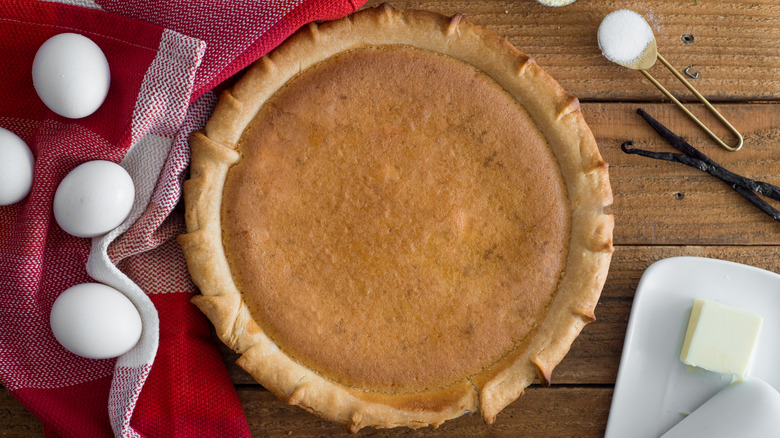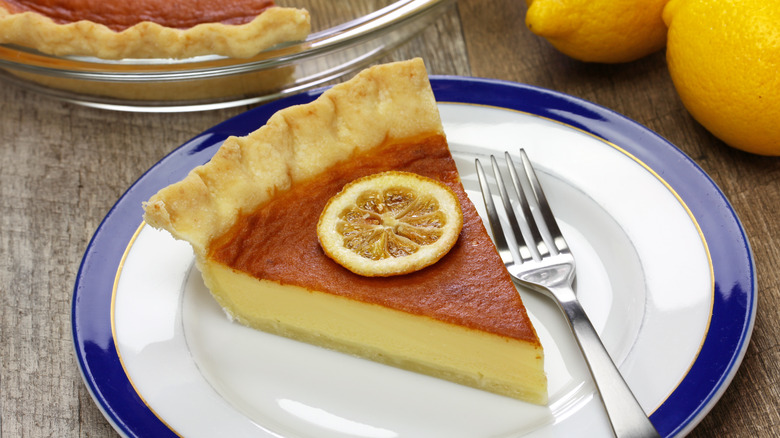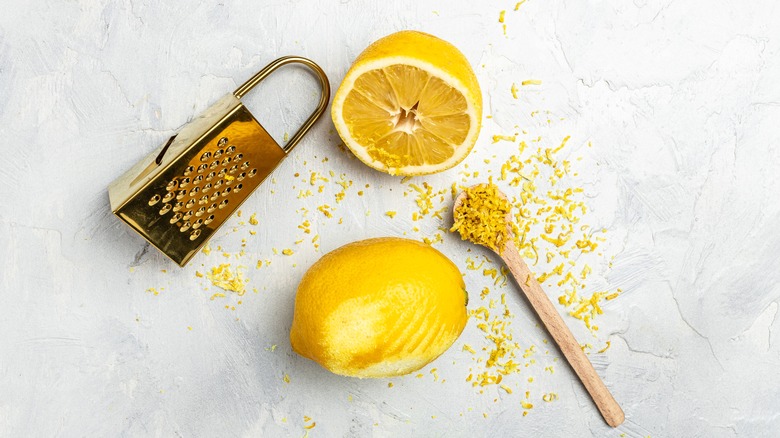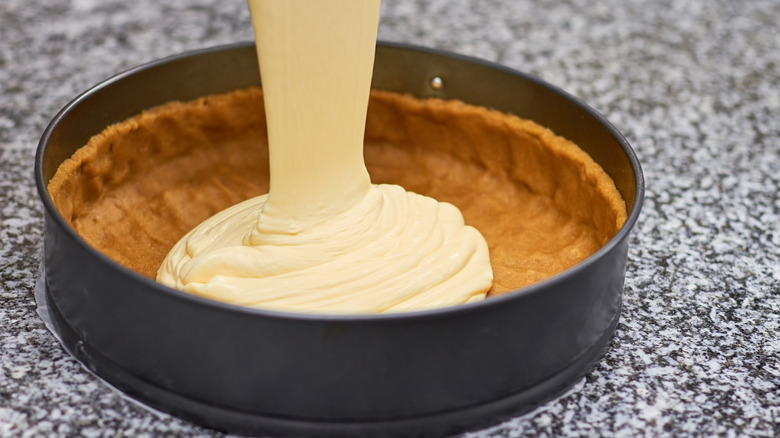Chess Pie Is The Southern Staple That Will Satisfy Your Sweet Tooth
When you think of a pie you probably think of the classics: Dutch apple pie, pumpkin pie, or pecan pie. But in you ask the U.K., a pie should involve minced mutton and hot water pastry. If you meet anyone from the city of Chicago they should tell you that their favorite pie is deep-dish pizza. Globally, there is no one-and-be-done way to make pie. Pies can be sweet, savory, meaty, cheesy, and chocolaty, and depending on what corner of the world you come from you may have your own traditional pie recipe.
In the United States, a pie with a fairly simple recipe, but a strange name is well-known to those who live in the deep South, but unheard of to those who live outside of it. Chess pie has nothing to do with the game of chess, and everything to do with some sweet Southern hospitality and a little bit of lemon.
What is chess pie?
According to The Kitchn, chess pie usually uses lemons for taste, but some recipes are also known to call for -and you'll never guess it- vinegar. Besides some optional lemon juice, this pie contains no fruit, nuts, and traditionally, no chocolate though some oddball recipes have strayed from the ordinary and created chocolate-flavored chess. Southern Living claims that when you cut into the crust of an old-fashioned chess pie, it is supposed to have a gooey texture, be uber-sweet, with a touch of acidity to cut through all the sugar.
It is a Southern fan-favorite and is sure to tickle the taste buds of anyone with a sweet tooth, but if you've ever had a lemon curd tart you're probably thinking to yourself that the chess pie sounds an awful lot like it. A lemon tart is made of a pastry shell with lemon, sugar, butter, egg, and salt, while a chess pie also has a pastry shell filled with butter, sugar, and eggs (via Food Network). The difference between the two is that chess pie uses another thickening agent in the filling whether it be a flower, cornmeal, or both!
The History of Chess pie
It could be that the chess pie originated from the English lemon tart due to all the similarities, but no one knows for sure. What we do know is that What's Cooking America has a record of chess pie appearing in Martha Washington's cookbook which was written in the mid-18th century. The recipe calls for cream, eggs, and sugar with butter and flour for the crust. They didn't have much in the way of flavorings back then but the idea lives on in Southern kitchens today.
As for the name "chess pie" Southern Living claims that there are a few theories out there, one of which being that "chess" came from "cheese" though chess pie contains no cheese. Another idea is that the chess pie was contained in a chest before eating. Then there is the belief that the southern accent somehow messed with the original wording and now we just have a funky nonsensical name to enjoy along with a funky little dessert.
Chess pie ingredients
Lemon chess pie is the traditional version of this Southern delicacy, though there are other, equally delicious variations. Eater tells us that there are a lot of recipes under the umbrella term of chess pie. The base ingredients are most commonly sugar, butter, and eggs, but from there you can use all different kinds of flour or even cornstarch to thicken the filling. The food site also says that, as sweeteners go, the chess pie can use anything from brown sugar to maple syrup to honey or basically anything classified as a sweetener for this dish.
As we said before, the ingredients in chess pie recipes vary greatly so bakers can have some fun experimenting with flavors and foods. Hercules Chess lists some of their favorite chess recipes on their website, many of which use a combination of different thickening agents such as all-purpose flour and cornmeal. Some recipes such as the buttermilk chess pie call for the use of buttermilk while others omit it. Almost every recipe uses a different acidic ingredient from lemons to vinegar and even grapefruit! All these chess pies have different flavors, looks, levels of sweetness, and even textures but one thing remains the same: they all share the same mysterious name of "chess pie".



